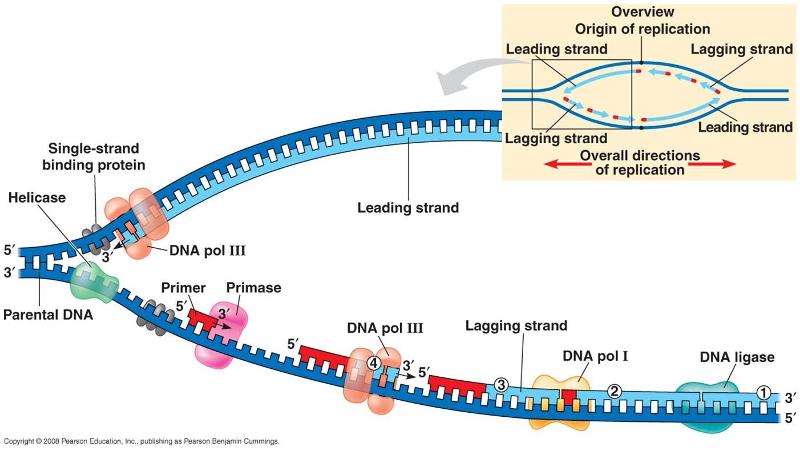The law of complementary base pairing shows that we can forecast the base series of one DNA strand if we understand the series of the other. More notably, it allows a cell to reproduce one strand based upon info in the other. The essential actions of the replication process are as follows :
- The double helix relaxes from the histones.
- Like a zipper, an enzyme called DNA helicase opens one brief section of the helix at a time, exposing its nitrogenous bases. The point where the DNA is opened up, like the 2 halves of a zipper separating, is called the replication fork.
- Molecules of the enzyme DNA polymerase move along each strand; checked out the exposed bases; and like a matchmaker, organise “marital relationships” with complementary free nucleotides. If the polymerase discovers the series TCG, for instance, it puts together AGC across from it. The 2 apart strands of DNA are copied by different polymerase molecules, continuing in opposite instructions. On one strand (top of figure 4.14), the DNA polymerase moves towards the replication fork and makes a long, constant, new strand of DNA to complement the old one. On the other strand (bottom of the figure), DNA polymerase moves far from the replication fork and copies just a brief section of DNA at a time. The segments are then collaborated by another enzyme called DNA ligase. Eventually, from the old parental DNA molecule, 2 new daughterDNAmolecules are made. Each daughter DNA consists of one new helix synthesised from free nucleotides and one old helix saved from the parental DNA. The process is for that reason called semiconservative replication.
- While DNA is synthesised in the nucleus, new histones are synthesised in the cytoplasm. Countless histones are transferred into the nucleus within a couple of minutes after DNA replication, and each new DNA helix twists around them to make new nucleosomes.
In spite of the complexity of this process, each DNA polymerase operates at a remarkable rate of about 100 base sets per second. Even at this rate, nevertheless, it would take weeks for one polymerase molecule to replicate even one chromosome However in truth, countless polymerase molecules work all at once on each DNA molecule, and all 46 chromosomes are duplicated in a simple 6 to 8 hours.
x


 (58 votes, average: 4.76 out of 5)
(58 votes, average: 4.76 out of 5)